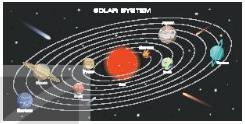Planet earth is part of a system of planets and their moons, as well as numerous asteroids and comets which (1).........around a huge star we call the Sun.The Sun itself (2).........of gas. Nuclear reactions inside its core (3)..........the heat and light that make life on the Earth (4)........... . The Earth is the third of four small terrestrial (Earth like) planets that orbit close to the (5).......... . Further out in our Solar System are four huge gas planets, while distant Pluto, (6).........
Đọc tiếp
Planet earth is part of a system of planets and their moons, as well as numerous asteroids and comets which (1).........around a huge star we call the Sun.The Sun itself (2).........of gas. Nuclear reactions inside its core (3)..........the heat and light that make life on the Earth (4)........... . The Earth is the third of four small terrestrial (Earth like) planets that orbit close to the (5).......... . Further out in our Solar System are four huge gas planets, while distant Pluto, (6)..........planet, is made (7)......... rock and ice. Our Earth is one of the ten planets that orbit the Sun- a huge, burning-hot star in the center of our Solar System. The Solar System and all the star in the (8).........are part of our galaxy-the Milky Way, which (9)...........as many as 200 billions star. Beyond our galaxy (10)...........millions more galaxies. They all add together to make up the Universe.
1. a.run b.orbit c.turn d.walk
2. a.consists b.remains c.includes d.maintains
3. a.produce b.product c.production d.productive
4.a.able b.possibility c.possible d.ability
5. a.Earth b.Mars c.Mercury d.Sun
6. a.The smaller b.smallest c.the most smallest d.the smallest
7. a.from b.of c.for d.in
8. a.space b.Universe c.Moon d.sky
9. a.consists b.makes from c.stays d.contains
10. a.is b.are c.to be d.Get

















